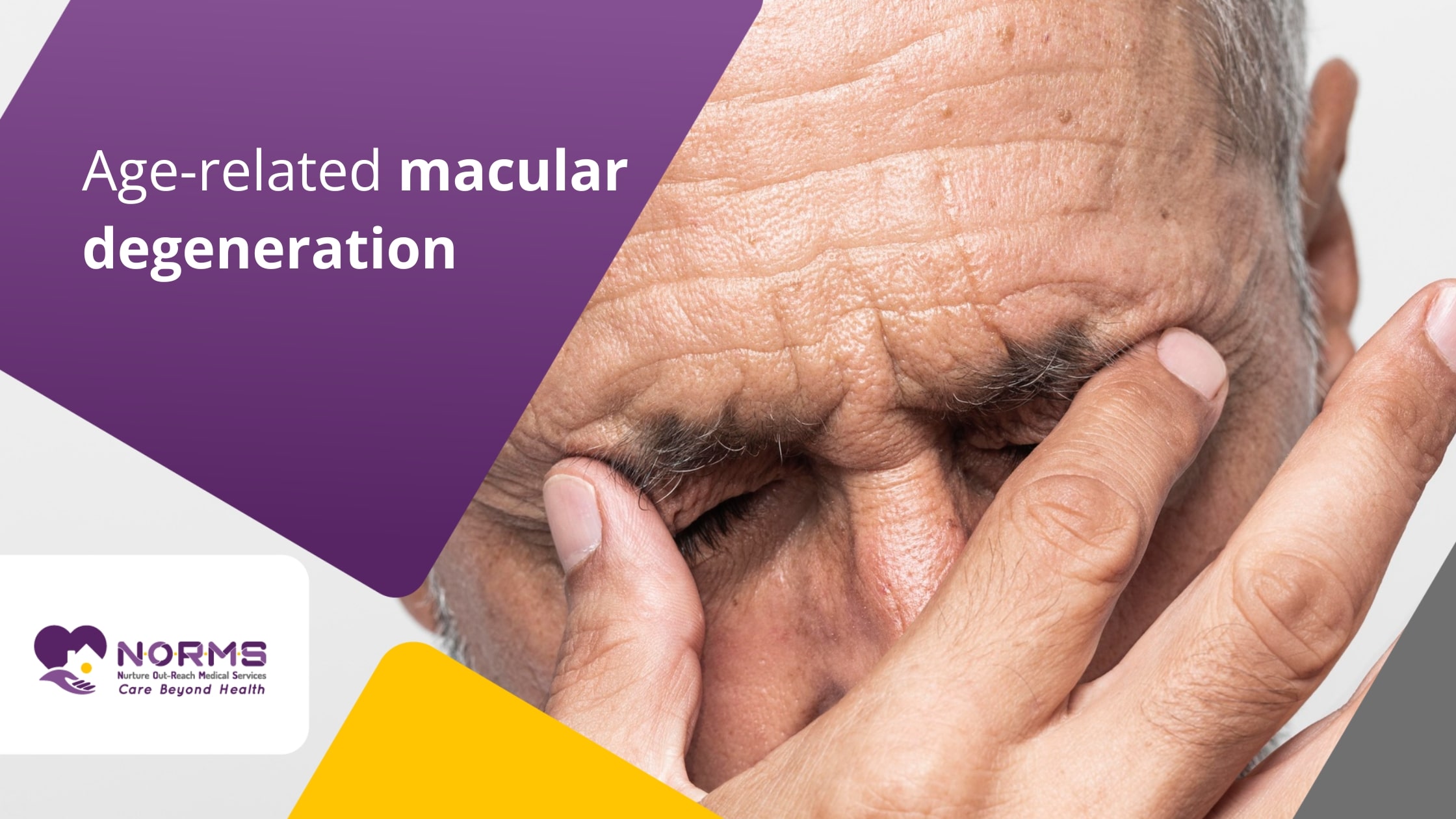
Age-related macular degeneration (AMD) is an eye condition that can cause central vision impairment. It occurs when the macula, the area of the eye that regulates crisp, straight-ahead vision, is harmed by aging. The macula is a component of the retina, which is the rear of the eye’s light-sensitive tissue.
AMD is a prevalent ailment that is the primary cause of visual loss in the elderly. AMD can not result in total blindness, but it can make it more difficult to drive, read, recognize people, and do close-up tasks like housework or cooking.
Let’s dive into this article and understand AMD and ways to manage it in elders.
There are two main types of AMD – Atrophic (dry) and wet (neovascular)
This more common form of AMD, accounting for about 80-90% of cases. It occurs when the macula thins over time as one continues to age, leading to gradual vision loss.
Dry AMD undergoes three stages – Early, intermediate, and late.
While this is less common, wet AMD is a lot more severe and accounts for the majority of the cases which leads to significant vision loss. It occurs when abnormal blood vessels grow under the retina and macula, leading to bleeding, leaking, and scarring. If one has wet AMD, vision loss can happen very rapidly.
The symptoms of AMD vary depending on the type and stage of AMD, but often the symptoms include the following :
Inherent risk factors like age and genetics can’t be changed, but certain lifestyle changes can help reduce the risks of developing AMD.
Eating a healthy diet, rich in leafy green vegetables, fruits, nuts, omega- 3 fatty acids can all support eye health. Additional intake of certain vitamins and minerals can also help reduce the risk of AMD progression.
Regular exercise will be important for any age, maintaining a healthy weight and engaging in regular physical activity can reduce the risk of AMD, by improving blood circulation and reducing the oxidative stress that the body might be under.
An individual needs to quit smoking if they wish to protect their eyes from AMD. while it may be a hard decision for those who smoke regularly, this is a decision that must be made on priority if they wish to take care of their health and eyesight.
Wear sunglasses that block UV rays to protect your eyes from sun damage.
Having your eyes regularly checked every 4 to 6 months can drastically help manage AMD if it develops.
The treatment for AMD depends on whether you have dry or wet AMD
There is no cure for dry AMD, but certain lifestyle changes and treatments can slow its progression. These include taking AREDS supplements, maintaining a healthy diet, and regular monitoring by an eye specialist.
There are several treatment options for wet AMD, the treatment options include:
Medicine such as ranibizumab (Lucentis), aflibercept (Eylea), and bevacizumab( Avastin) are injected into the eye to stop the growth of abnormal blood vessels. Do not try to inject these medications without proper medical consultation, one must get a prescription and should not try this at home.
This involves the use of a light-activated drug to destroy abnormal blood vessels.
In some cases, laser surgery might be required to destroy the abnormal blood vessels.
While living with AMD can be quite challenging, there are ways to adapt and maintain a good quality of life.
Devices such as magnifying glasses, special reading glasses, and electronic magnifying glasses, special reading glasses, and electronic magnifiers can help you make the most of your remaining vision.
Ensure your living and working spaces are well-lit to reduce the strain on your eyes
Make simple modifications like using high-contrast items, like white dishes in a dark placement, and making important items with tactile stickers.
Voice-activated devices, audiobooks, and screen readers can help you stay independent
Join support groups or counseling to connect with others facing similar challenges and learn new coping strategies
Age-related Macular degeneration is a significant cause of vision loss in older adults, but early detection, lifestyle changes, and appropriate treatment can help manage the condition. Regular eye exams and healthy habits are crucial for preventing or slowing the progression of AMD.
There is no cure for AMD, but treatments can slow the progression of AMD
Genetics play a role in AMD, sp if you have a family history, you might have a higher of AMD.
People over the age of 50 should get their eyes checked at least once every 6 months or whenever their doctor has advised them to come.